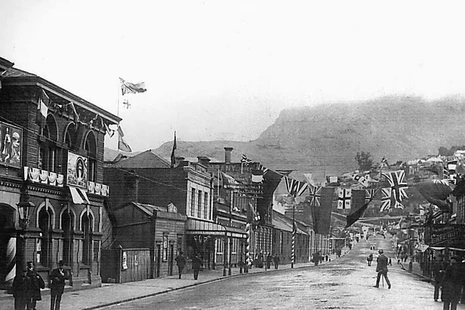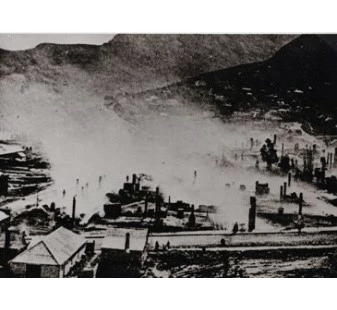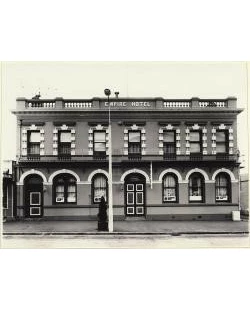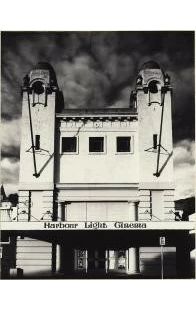T) London Street
The final part of your walk has you returning to London Street, via Oxford Street.
It has always been the main shopping centre for the township and that tradition continues to this day.
London Street was not spared during the great fire or the earthquakes. Indeed, the fire of 1870 started in the Queens hotel on the corner of Oxford Street and London Street. One can only imagine the fear and panic that must have been felt as the flames engulfed both London Street and Norwich Quay for two blocks. However, these early settlers were not deterred, and their great pioneering spirit led to their homes and businesses being rebuilt. This time many were built with stone and brick which would fare much better than wood in the event of another major fire.
As previously stated, many of these and subsequent buildings resulted in Lyttelton being awarded Category 1 Historic Area status in 2009.
A great deal of this landmark, architectural heritage was lost in the earthquake less than 2 years later, as several buildings on London Street (some pictured here) were either destroyed or had to be demolished.
Once again, the Lyttelton pioneering spirit was called upon to bring the community together and rebuild what was lost.
Today, as you wander along the street, take in the ambiance. Be sure to look for the old trading buildings that have survived and now serve as shops and cafes.
Take note of the empty sections. Some house shipping containers which sell goods or food, while others are generating funds for exciting new building projects. An example being the site of the new Museum at 33/35 London Street which has recently unveiled their plans for a bold new building.
Lyttelton’s colonial history is rich and diverse and highly significant to the settlement and growth of Canterbury and the South Island. It has experienced its fair share of disaster for a small town, but the pioneering spirit of the early settlers live on in today’s people, and Lyttelton will continue to grow from strength to strength.





